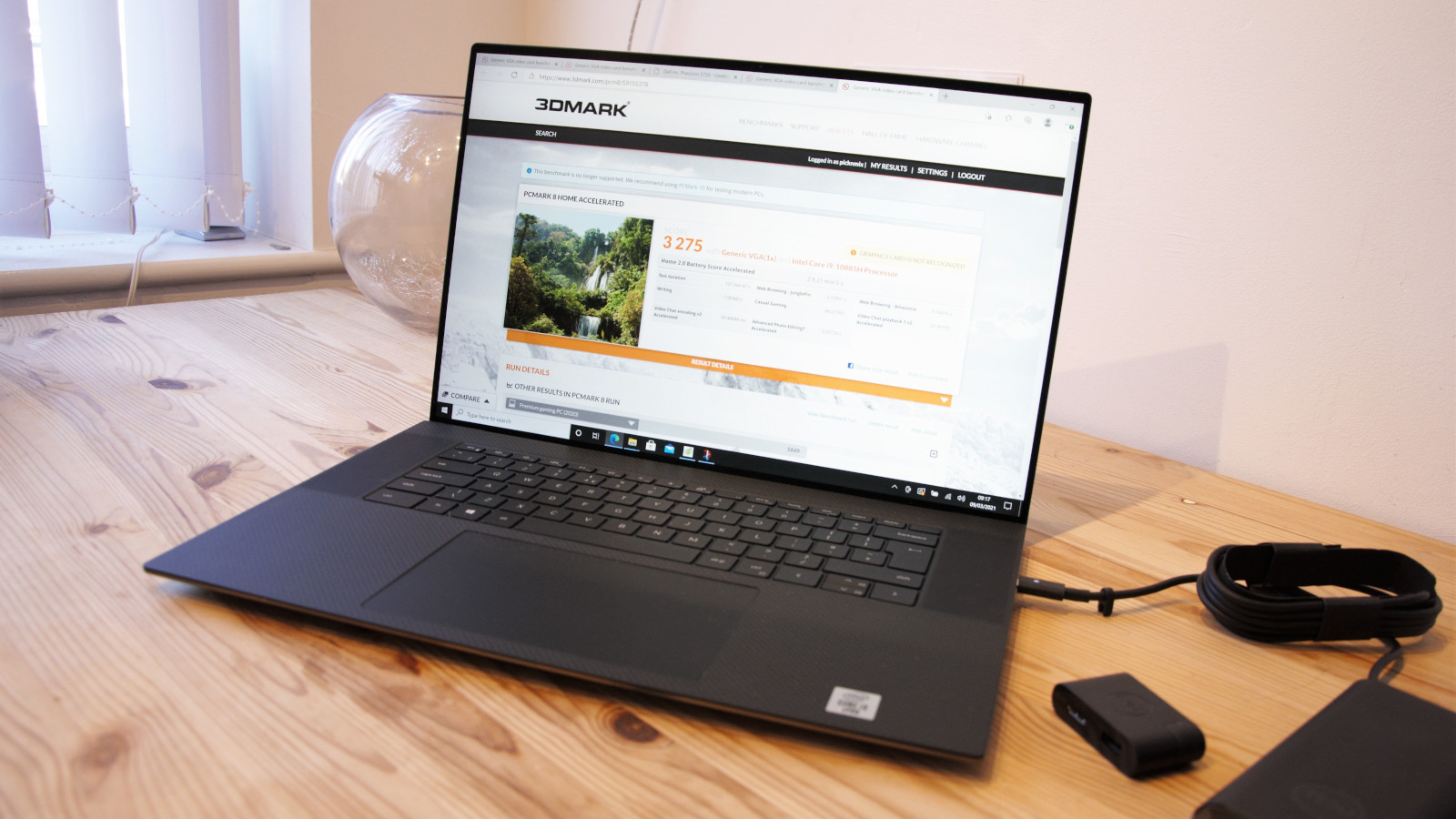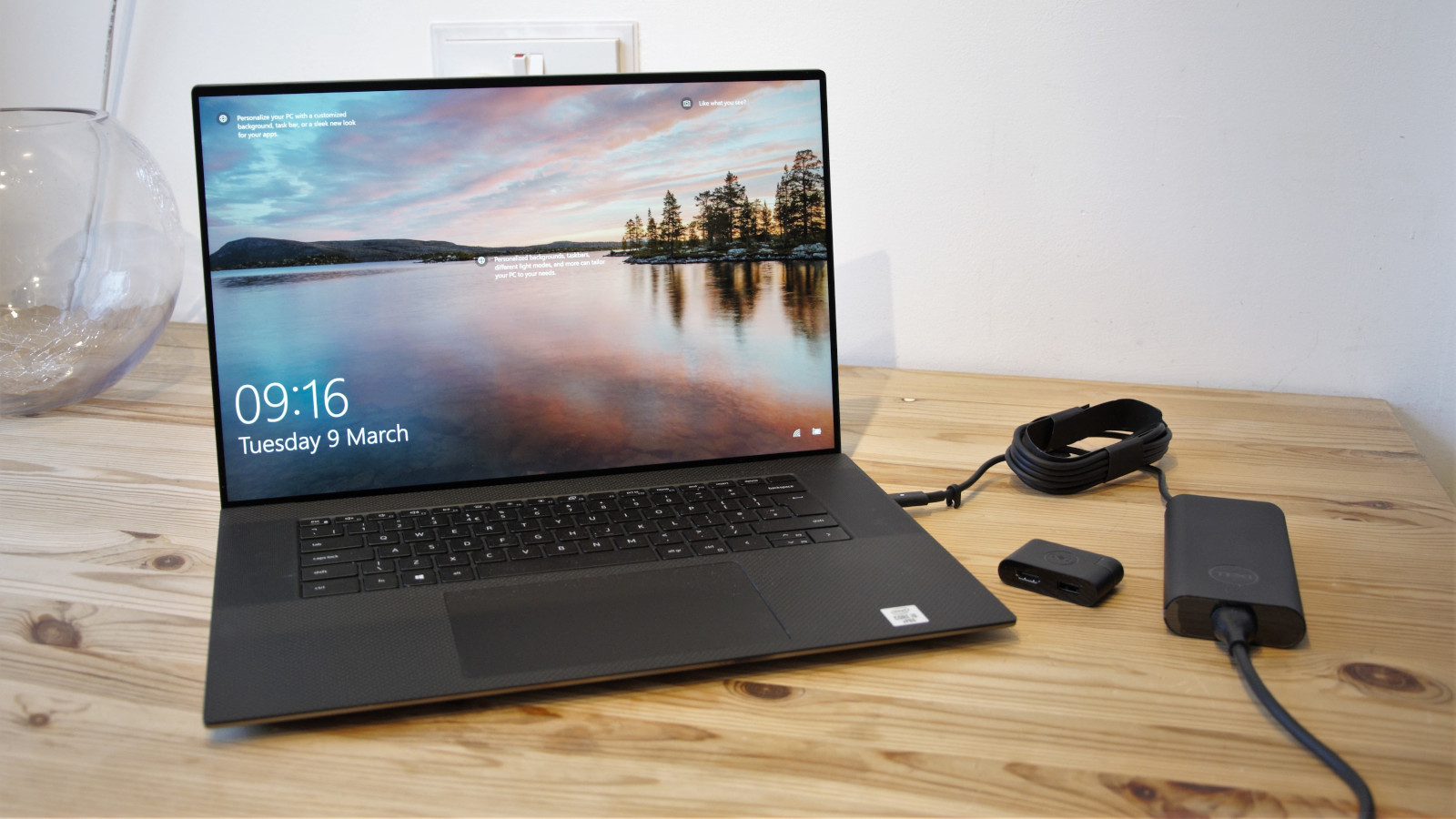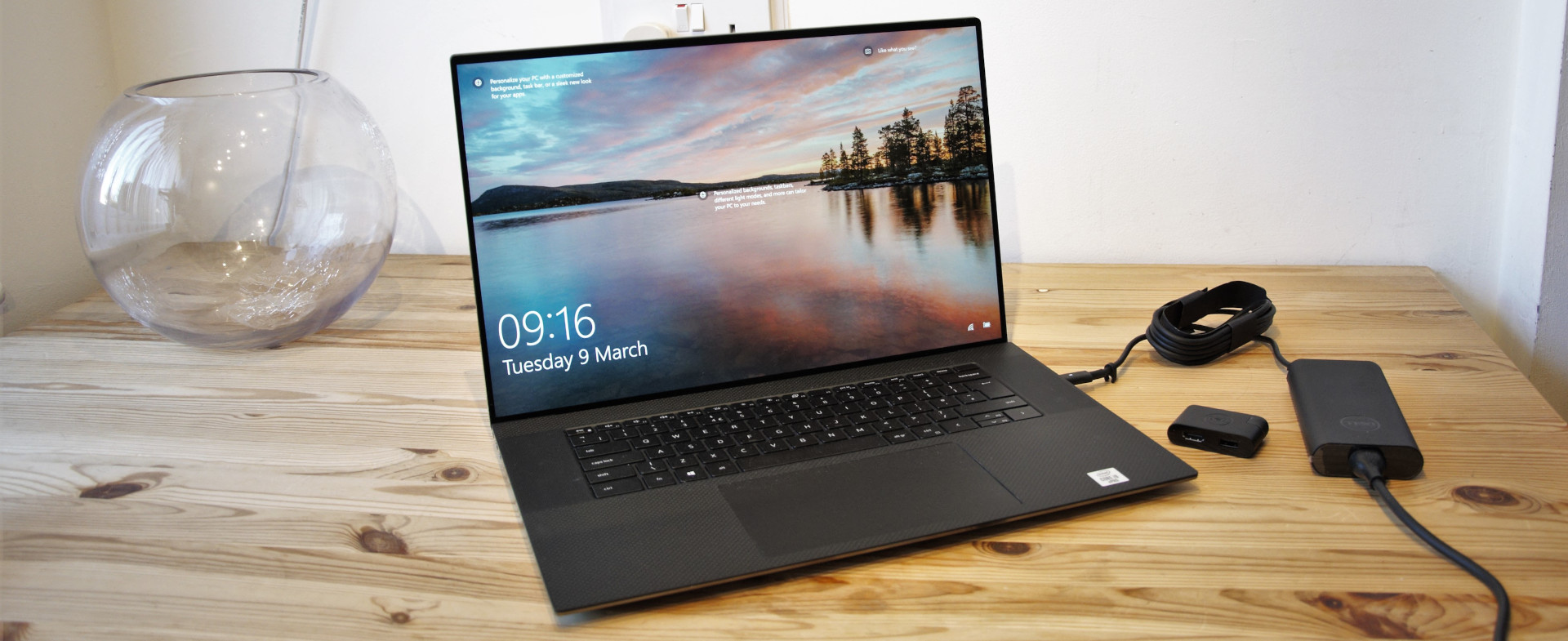Why you can trust TechRadar
Performance
Here's how the Dell Precision 5750 scored in our suite of benchmark tests:
3DMark: Wild Life: 13,744; Fire Strike: 13,387; Time Spy: 5,765
Cinebench R20 CPU: 3,508
Cinebench R23 CPU: 1,165 (single-core); 8,575 (multi-core)
GeekBench: 1,056 (single-core); 7,832 (multi-core)
CrystalDiskMark: Sequential Read: 3,042MB/s; Sequential Write: 2,818MB/s; 4KiB Q32T1 Random Read: 43.44MB/s; 4KiB Q32T1 Random Write: 102.8MB/s
PCMark 8 (Home Test): 3,550 points
PCMark 8 Battery Life: 2 hours and 21 minutes
Battery Life (Techradar movie test): 3 hours and 22 minutes
It pains us to admit this, but the Intel Core i9-10885H processor isn’t as big a performance monster as we initially assumed.
While it delivers excellent multi-core scores on those tests that consider that aspect, its single-core performance is mediocre considering that, in theory, it can boost to 5.3GHz.
In GeekBench, as an example, the Intel Core i7-10870H that we tested in our Gigabyte AERO 17 review managed 1,290, over the 1,056 that the Core-i9 achieved.
Comparing it to the AMD Ryzen 5980HX CPU appearing in some new machine, that chip scores 1,617 on GeekBench single-core test and 9,624 on multi-core.
Continuing the theme of fast, but not the fastest, the GPU related tests reveal that the Quadro RTX 3000 with Max-Q Design is about 70% of what a mobile RTX 3070 offers on a similar system.

Had Dell used that GPU, it might have made this machine even more expensive, but it would also have been quicker.
The performance of the NVMe drives provided by Toshiba is good, but not exceptional. As Intel didn’t embrace PCIe 4.0 on the WM490 chipset, and so this machine can’t exploit any of the super-fast NVMe drives that support PCIe 4.0 mode.
That it doesn’t might also be a blessing in disguise, since the worst numbers of our test are the battery scores, as this machine eats through the 97 WHR, 6-cell, Lithium-ion polymer battery disturbingly quickly.
Incredibly Dell offers the cheaper versions of this hardware with a 56 WHR, 3-cell battery, and how long that might keep the system afloat would be a concern.
In short, this machine needs mains power for any degree of prolonged use.

Final verdict
As mobile workstations go, the Dell Precision 5750 is a classy option that delivers many of the performance features that power users would like.
Dell put its business hat on when they included the Nvidia Quadro GPU option and left out the superior mobile RTX 3070 crushes any Quadro card, regrettably. Either of the possible Quadro options is by a magnitude better than the Intel UHD 630 integrated GPU, so we should count those blessings.
Where this machine departs from the normal Dell designed hardware is that they’ve allowed the designers to imagine the system they’d most like. The Precision 5750 has a purity of purpose that many business machines lack, and it is refreshing to see from Dell.
This clarity is exemplified by the port layout, with only Type-C ports and no other options.
We admire Dell’s ambition here, but even with the included HDMI/USB Type-A gizmo they included, this machine demands a Thunderbolt 3 docking station to address the numerous port omissions.
Dell makes a selection of docking stations, though there are some even better and more affordable ones from OWC and Glyph, among other brands. Anyone considering this unit should certainly budget for one of them, plus any other port-converting accessories that they might need.
Where this design disappoints is that it is impossible to buy a lower specification design and upgrade it later without dismantling the machine, and the battery capacity isn’t nearly enough for levels of power this system can guzzle.
In both the US and UK, it is cheaper to have a single 2TB NVMe SSD installed than to have two 1TB drives, as in the review machine. And, whatever choice you make the cost of storage from Dell is much higher than the retail cost of identical parts.
We expect high costs whenever the word ‘Workstation’ is brandished by PC makers, but the Dell Precision 5750 is expensive for a machine that can’t run for prolonged periods on battery and isn’t easily upgraded.
Mark is an expert on 3D printers, drones and phones. He also covers storage, including SSDs, NAS drives and portable hard drives. He started writing in 1986 and has contributed to MicroMart, PC Format, 3D World, among others.

